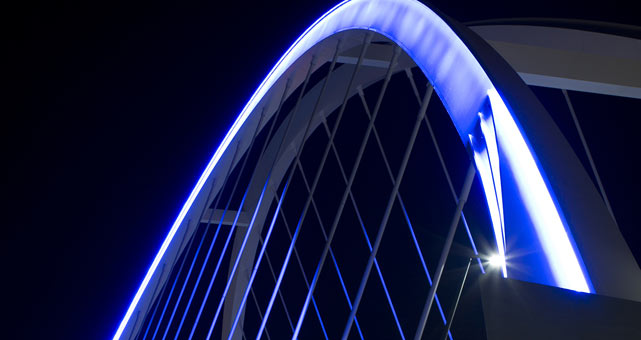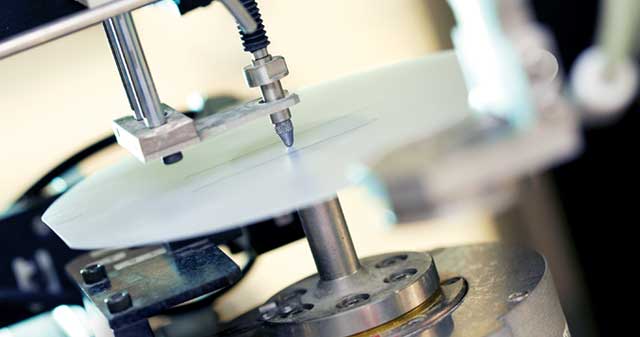Unparalleled Opportunity
Unparalleled Leadership
Unparalleled Innovation



Broad adoption of LEDs in general lighting is assured, pointing to steadily improving worldwide demand for sapphire substrates in the LED market.
Today, LEDs remain the single largest end market for sapphire, and within that market, the two primary applications are general lighting and LCD backlighting for televisions, computers, tablets and mobile devices. The use of LEDs in general illumination has now entered a period of accelerating growth, providing a renewed opportunity for Rubicon’s vertically integrated manufacturing capabilities and global leadership in large-diameter sapphire production to have an impact.
The advantages of LEDs in general lighting are well-documented and compelling. Energy savings, long lifetime, reliability and environmental friendliness are positioning LEDs as the technology of choice for general lighting. Today, as LED prices decline, product quality improves, lumens-per-dollar rise, and payback periods for commercial applications shorten, broad adoption of LEDs in general lighting is assured, pointing to steadily improving worldwide demand for sapphire substrates in the LED market.
Sapphire’s versatility and inherent physical characteristics—including hardness, resistance to corrosion, light transmission and thermal insulation—make it an ideal material for a wide range of additional applications, including optical windows and RFIC. Silicon-on-Sapphire (SoS) RFIC technology is poised to be adopted for additional applications as well, and Rubicon’s vertically integrated manufacturing capabilities and legacy of quality and volume delivery will continue to make us the supplier of choice.
Moving forward, look for sapphire to gain favor as an alternative material for faceplates or covers in smart phones and other consumer electronic devices. Given sapphire’s extreme hardness, fabrication costs make this particular application somewhat cost-prohibitive today. But Rubicon is working on alternative approaches to address this opportunity. A technology breakthrough could open up a market several times the size of the LED market for sapphire.
As the trusted supplier of choice to a growing global LED market, Rubicon continues to invest in the intellectual property and expertise that the industry demands.
Large-diameter sapphire substrates are a critical component in the cost-effective production of LEDs for all end markets, and particularly for general lighting. Rubicon’s vertically integrated, end-to-end manufacturing capabilities and proven crystal growth technology have propelled the company to a leadership position in the large-diameter sapphire.
Among the many initiatives undertaken by Rubicon’s research and development team, work on patterned sapphire substrates (PSS) has been a primary focus recently. Before beginning the MOCVD process, most LED manufacturers etch a pattern onto sapphire substrates to facilitate epitaxial growth and to extract more light from each LED chip. This year, Rubicon expects to be the first to market with large-diameter patterned substrates for LED customers—allowing them to remove this pre-production process from their regimen and focus on their core technology.
As the trusted supplier of choice to a growing global LED market, Rubicon continues to invest in the intellectual property and expertise that the industry demands and is strongly positioned to capitalize on the tremendous opportunity presented by the lighting market.
Demand for sapphire continues to expand into additional diverse applications and markets, and Rubicon is uniquely positioned to provide the broad range of high-quality sapphire products required to address these emerging markets.
Vertical integration is the catalyst driving Rubicon innovations—from the ability to grow progressively larger sapphire while maintaining exceptional quality, to being first to market with large-diameter wafers.
Rubicon’s technological and market leadership are directly attributable to its heritage of innovation and vertical integration. This end-to-end manufacturing capability, with unparalleled intellectual property at each step of the manufacturing process, results in an advantageous cost structure and provides better control of product quality and delivery schedules.
Vertical integration is the catalyst driving Rubicon innovations—from the ability to grow progressively larger sapphire while maintaining exceptional quality, to being first to market with large-diameter wafers. To date, Rubicon has shipped more than 400,000 six-inch wafers—a number that will grow as more manufacturers seek to leverage the inherent cost efficiencies of larger-diameter substrates. Our expertise in and control of every link in the sapphire value chain spurs continuous improvement and refinement of the manufacturing process.
In 2012, Rubicon moved closer to full deployment of its in-house capability to purify and densify raw powdered aluminum oxide into the material used in the sapphire crystal growth process. This capability gives Rubicon more control over supply and quality and, when fully implemented in mid-2013, will result in significant cost savings. Also in 2012, patents for processes and technologies covering precision wafer grinding and polishing and in-situ orientation of sapphire crystals were issued to Rubicon by the United States Patent and Trademark Office.
The innovations made possible through vertical integration continue to drive sapphire adoption in markets beyond LEDs. In 2012, Rubicon announced a ground-breaking project, dubbed Large-Area Net-shape Crystal Extraction (LANCE), developed to produce optical quality large-area rectangular sapphire windows up to two inches thick for military sensing applications. The project, supported by a contract with the Air Force Research Laboratory (AFRL), has a total value of $4.7 million over three years.
At Rubicon, unparalleled innovation is not a goal or a marketing catch phrase; it is the culmination of everything we do.